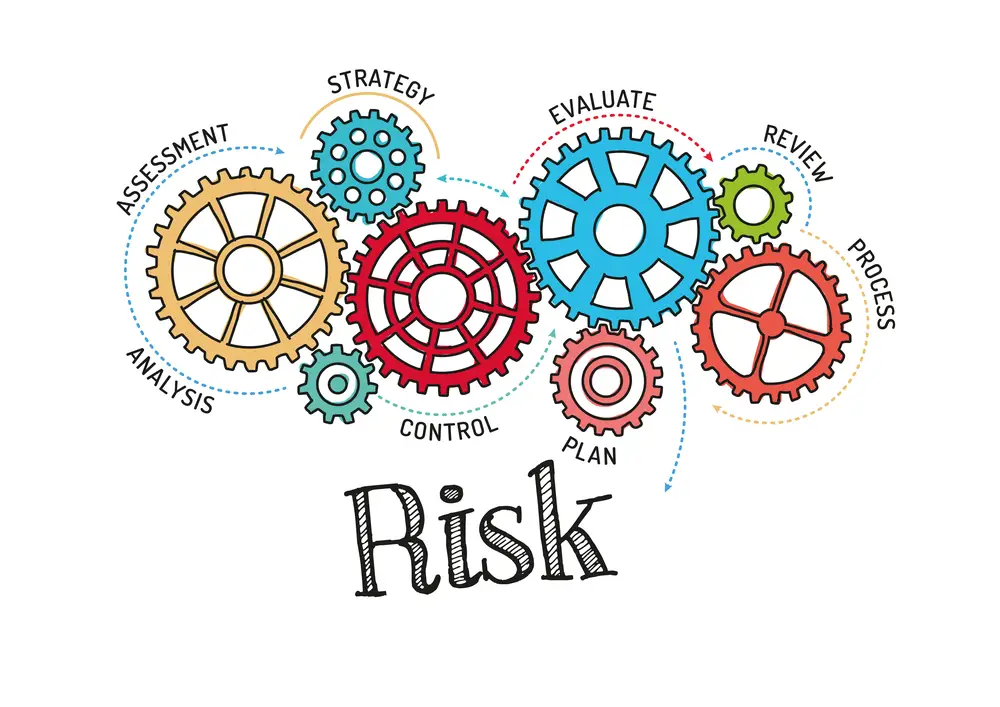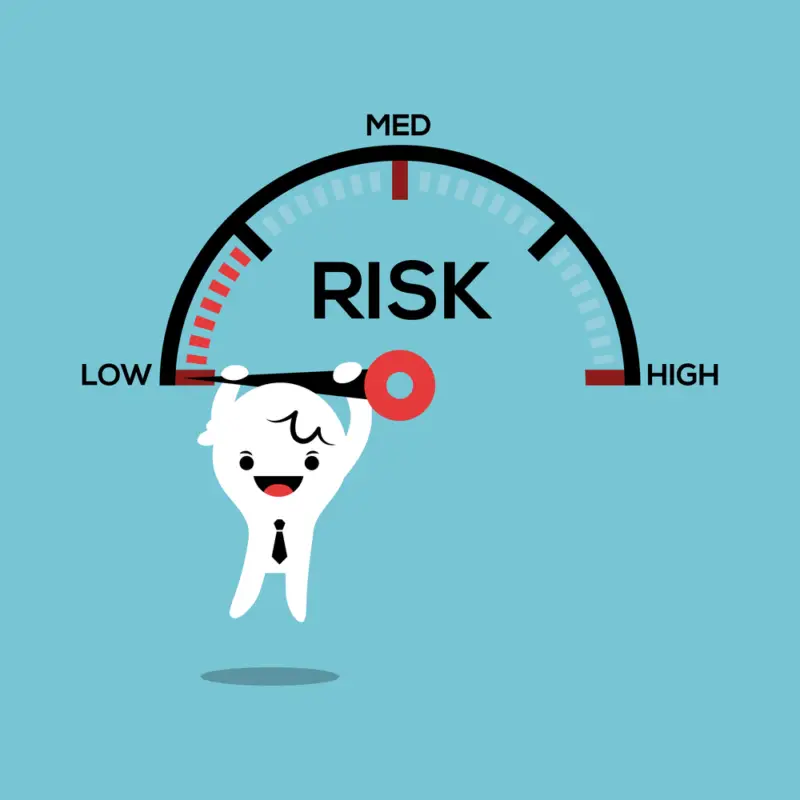Legal departments must be aware of the key risk indicators that can indicate whether or not their organization complies with applicable laws and regulations. These risk indicators could include changes in the industry landscape, changes in the organization’s policies and procedures, increases in litigation activity related to the organization, and changes to internal control systems.
Monitoring these legal services areas closely can help legal departments identify potential compliance issues before they become liability issues. Maintaining an up-to-date risk indicator system allows in-house legal department to take preemptive steps to mitigate any risks and ensure organizational compliance.
The importance of key risk indicators for legal departments cannot be overstated. These indicators provide valuable insight into an organization’s potential areas of non-compliance, enabling legal departments to monitor and detect any changes that may present a risk.
Furthermore, key risk indicators enable legal departments to provide proactive advice on how best to prevent potential liabilities from arising in the first place and increase legal spend.
Key risk indicators for legal departments provide valuable information on what to look out for to ensure compliance. Understanding the importance of these indicators is essential, as it allows legal departments to focus on and monitor the areas that pose the highest risk. Utilizing key risk indicators properly is also imperative; this includes analyzing relevant data and ensuring that any changes are tracked and documented appropriately.
These include areas such as changes in laws and regulations, employee performance, customer complaints and feedback, financial data, and other metrics. With a system in place that compares and analyzes data regularly, legal departments can quickly identify any potential compliance issues before they become liabilities.
As legal departments continue to evolve, it is essential to stay ahead of risk and ensure compliance with applicable laws. This blog post will explore the importance of key risk indicators for legal departments, providing useful information on what to look out for by legal team, why they are important, and how to best utilize them.
We will look at the types of key risk indicators that should be monitored and outline a system that can help identify any potential compliance issues before they become legal matters. Finally, we will discuss effective strategies for staying in control of risk and keeping up-to-date on key risk indicators to ensure your organization remains compliant.
Key Performance Indicators in Legal Departments
For legal departments and law firms, tracking KPIs key performance indicators (KPIs) is essential for gaining insights into the efficiency and effectiveness of their work. KPIs measure the performance of specific tasks, processes, or goals and provide insight into how a legal department can measure key performance indicators and how best to achieve its objectives.
Why KPIs are Important for Legal Departments
KPIs are important for legal departments because they objectively assess progress on various tasks and activities. By tracking KPIs, legal departments can identify areas needing improvement or additional resources and areas where processes in-house legal team may run smoothly.
Additionally, tracking KPIs allows legal departments to set clear goals and track progress toward those goals over time. This information can then be used to inform decision-making within the department and ensure that resources are being used efficiently.
Examples of Legal Department KPIs
There are a number of different types of KPI that legal departments can use to track performance. Here are just a few examples:
– Number of court cases won vs lost – Tracking the number of court cases won versus lost provides valuable insight into the effectiveness of a legal team’s litigation strategy.
– An average number of days spent on each case – Tracking the average amount of time it takes for a case to be completed can help indicate areas where additional resources might be necessary or where processes could be streamlined.
– Percentage of cases resolved without going to court – Measuring the percentage of cases resolved without going to court can help indicate how effective a team’s negotiation strategies are and whether additional training or resources might be beneficial.
– Percentage increase/decrease in compliance violations – Tracking changes in compliance violations over time indicates whether current training and monitoring procedures are effective or if changes need to be made for compliance requirements to be consistently met.
-Percentage of cases solved/resolved successfully Matters per attorney and/or per paralegal Staffing (internal) or billing (external) of paralegals to lawyers Matter practice area and which department raised the matter Legal matter time and expense versus administrative tasks.
-Legal matters handled versus revenue Number of law firm secondees and/or contractors vs permanent staff Time for legal invoice processing and payment Deadline compliance Cycle time.

Identifying and Monitoring Key Risk Indicators
Monitoring key risk indicators for the legal department is essential in today’s ever-changing business environment. Identifying and assessing potential risk exposures can significantly reduce a company’s potential loss when it takes proactive regulatory compliance measures, employs privacy standards, and further enforces audit controls.
As an example, proposed changes to legislation could substantially alter an organization’s operations, finance structure, or customer engagements
Additionally, monitoring internal controls and evaluating existing practices can help minimize risk exposures and protect against unexpected regulatory changes and industry shifts that could disrupt operations.
Companies must be aware of emerging regulation trends, global legal landscape developments, improving technologies, and other external factors that may shift the approach taken by legal departments. Taking these steps will ensure that companies are prepared for any challenges that arise within the wider legal arena.
Exploring Different Types of Key Risk Indicators in the Legal Sector
The legal sector has a wide array of factors that can lead to financial loss and risk, making the implementation of key risk indicators invaluable. KRIs provide organizations with meaningful early warning signals when potential risks are present, allowing businesses to take steps to minimize their impact.
Is there a particular business unit or legal issue that consumes more legal services than others? Has the company benefited from minimized liability exposure and decreased outside counsel expenses through training programs or policies that the legal department has implemented?
Some typical KRIs are litigation trends related to the enterprise’s core products or services,
- Settlements from legal proceedings,
- The number of contract disputes.
- Client complaints
- Breach notification times
- Data security compliance tracking,
- Contractual agreements,
Acquiring data from surveys and market research can also give insight into risk recognition and management and a competitor’s procedures for managing similar risks.
Monitoring these key indicators can be time-consuming but essential to anticipating organizational hazards. Doing so can help enterprises protect against financial losses and reduce long-term risks.
Implementing Strategies to Help You Monitor Key Risk Indicators
Build your report
Data collected from spreadsheets are a major part of your reporting process. In general, you can distill what you have collected into digestible formats for the leadership team. Remember that your goal will be to demonstrate the value to business leaders by representing your lawyers.
Ensure the report provides detailed information on your performance during a given period. You must place the strategic analysis at the forefront to get the best insights for you as soon as possible. For example, you can also analyze how KPIs were not meeting benchmarks and explain how action could be taken.
Understand the purpose of reporting
KPIs show how much your lawyer’s department adds to your business. Build a reporting strategy to show that business unit performance positively impacts the business’s bottom line.
You need strategic information collection when you work with no OP management solution. Although recording every detail you want may not be possible, you could use this info to prove your value. Focus the work you do to find information that will help illustrate how valuable you’re to the organization.
Determine which KPIs show value to the C-suite
Because reporting should demonstrate the value you bring to the organization, you should most likely begin tracking operating efficiency, total expenditures, projects cleared, or contracts closed.
With no legal operation managers, you are limited in how much information is collected; however, your timesheets, contract documents, and other documents may contain revealing information. If you plan ahead, you can still create a low-lift report which shows how much the C-suite has valued you.
Qualitative KPIs
You can measure or record qualitative KPIs. Contract quality measures the value each contract has for the company. Although determining value can be expensive, the contract may also provide strategic advantages. The value of each agreement varies according to the expertise of the person.
Qualitative metrics are crucial because what value a business provides to a company is rarely translated easily into measurable results. If the team spent considerable time and money negotiating these particular important contracts, you would need the leadership team to know about it. Aiming at achieving these results may prove a lot harder.
Qualitative KPIs provide a more holistic view of the customer experience and how they perceive your products, services, or business operations. They often pinpoint areas where improvements can be made to increase customer satisfaction, loyalty, and advocacy.
Moreover, qualitative KPIs provide valuable insight into the overall customer journey, which helps organizations make better strategic decisions and deploy resources more effectively. Aligning the company’s objectives with its customer’s needs is essential to remain competitive in today’s market, and qualitative KPIs can help you do that.
However, there are various disadvantages associated with these qualitative KPIs. They can be subjective in nature and open to interpretation, leading to an inaccurate representation of performance. Additionally, it can be difficult for business owners and decision-makers to draw actionable insights from qualitative KPIs
Their non-quantitative nature might not provide useful context or data that points to the key areas needing improvement. Ultimately, while they may offer important perspectives on organizational performance when used alone, they may not be the most reliable way to measure how well a company is doing.

Legal department KPIs to focus on:
It allows you to stay updated with staff performance; case outcomes; expenditure reporting; personnel development, projects, and their impact on the organization. It also gives an opportunity for robust analysis and provides vital insights needed to gauge the future growth of the legal portfolios that can lead to successful enterprise-wide initiatives.
With various leading-edge systems available, tracking such metrics has now become invaluable in helping management identify strengths and weaknesses within the legal team. Understanding legal KPIs is a must, as it helps drive success and provides greater transparency regarding investment decision-making.
Your KPI choices may differ according to your individual needs. The Legal Department does not track all the metrics related to a specific sector. Your total expenditures impact budgets, your contract closing cost impacts vendor relationships, and your hours impact personnel decisions.
This metric can help your leadership team determine how the company spends money on hiring. If your company needs more detailed data, there are measurable options available for you to choose from.
Quantitative KPIs
Look at revenues that have been tracked or classified. Your timesheets can show you what timekeeper is most qualified. Task code used in a bill from third parties can help provide leadership insight into vendor spending. It helps track costs and identifies areas in which you may be overspending.
Depending on the complexity of the invoice report, you can even report the reduction by line item by category (such as travel and research). You can find out how different practice areas work with each other by looking for the time for each area.
Quantitative key performance indicators (KPIs) offer a unique way to measure the success of a business. For example, a KPI could help track the amount of time that flows between customer inquiries and purchases or how long it takes for customers to get from one page to another in an online store.
This type of data helps produce actionable insights and assists with making more informed decisions. On top of that, KPIs also facilitate monitoring progress over time; you can evaluate exactly where things went right or wrong and address issues quickly before they become major problems. When utilized correctly, KPIs are invaluable tools that can save money, build efficiency, and provide valuable visibility into the inner workings of your business.
Quantitative KPIs often overlook picture-perfect objectives such as creative thinking and problem-solving qualities, meaning decisions based on quantitative KPIs may not always be well-rounded.
Furthermore, due to their rigid nature, qualitative KPIs don’t consider the progress made towards objectives – for example, if a team is actively working hard to meet their target but falls a bit short in the coming conclusion time, this hard work may not be recognized when measured against quantitative KPIs.
Lastly, it may take longer to implement quantitative KPI tracking than traditional methods like surveys and customer feedback; if you want reliable results concerning user behavior, then tracking KPIs should become part of your regular operations. All in all, it’s crucial to understand both the benefits and drawbacks of using quantitative KPIs to capitalize on your decision-making.
Create a legal department KPI tracking spreadsheet for reporting KPIs
It may help reduce the need for spreadsheets to track KPIs. KPI tracking spreadsheets create an information center for tracking metrics and identifying patterns that can be easily identified. Use your data when creating your spreadsheet to optimize your data. It’s possible that your operation will never be fully understood, but you have valuable insight.

Challenges in creating Legal department Key risk indicators
Organizations today face significant challenges in prioritizing risk indicators and creating them. This can be attributed to ever-changing regulatory requirements, rapidly evolving technological advancements, and globally varied compliance standards. Proper identification of key risk indicators requires comprehensive and detailed investigations into an organization’s risk management framework, which can be a painstaking process.
A sound list of risk indicators must include existing risks and potential risks that can arise with future changes in the external environment. In addition, the factors monitored should be tailored to the unique nature of each organization to ensure appropriate levels of safeguarding from legal issues.
Conclusion
In conclusion, Key Risk Indicators for Legal Departments are a powerful tool for mitigating legal risk and increasing the efficiency of legal operations. By understanding the most relevant KRIs in your industry, actively monitoring those indicators, and utilizing the latest technology to automate tracking and analysis, you can drastically improve your organization’s ability to identify potential compliance issues and manage these risks before they become costly problems.

Chris Ekai is a Risk Management expert with over 10 years of experience in the field. He has a Master’s(MSc) degree in Risk Management from University of Portsmouth and is a CPA and Finance professional. He currently works as a Content Manager at Risk Publishing, writing about Enterprise Risk Management, Business Continuity Management and Project Management.


